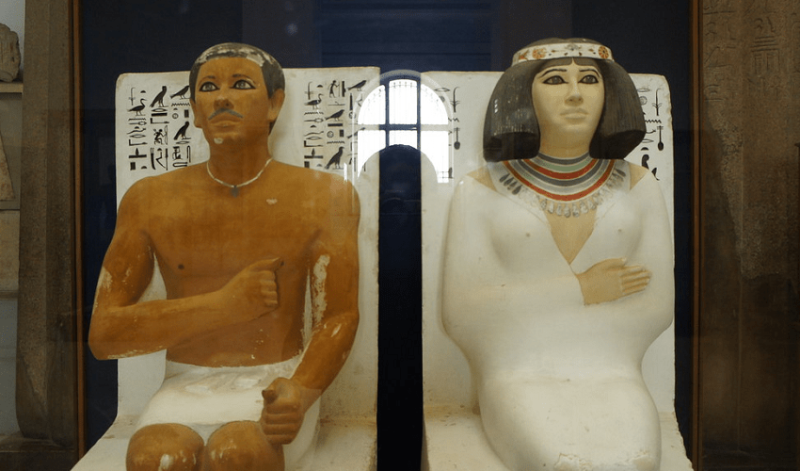- Home
- Egypt Blogger
- The Egyptian Museum in Cairo
- Mummification and Mummies in Egypt

- On 23 Jan 2023
- In The Egyptian Museum in Cairo
- Tags Mummification and Mummies in Egypt
Mummification and Mummies in Egypt
The Canopic Jars
The Viscera were stored in Canopic jars, their stoppers in the form of the four Sons of Horus the Jackal-headed Duamutef, the baboon - headed Hapy: the human headed Imsety and the falcon headed Qebehsenuef.
Mummification was practiced in Egypt for almost 3000 years, and evolved over time, Themain point of mummification was to dry nd thereby preserve the body so that it could be magically re-animated and entered by the deceased's soul for use in the afterlife.
A classic fairly standard of mummification was used on most of the New kingdom royal mummies first, the brain was removed, most often by reaching through the left nostril and breaking the ethmoid bone, Then the embalmers made a small incision in the left side of the body to remove the stomach, liver , intestines, and lungs These were dried separately and placed in special containers known as Canopic jars, The heart considered the seat of the soul and thus vital for the Hereafter, remained in the body
Animal mummies
The ancient Egyptian mummified animals as well as humans, There are four types of animal mummies, First pets buried with their owners, second victual or food mummies that would provide sustenance for the owner throughout eternity, Third sacred animals, fourth votive offerings
Animal mummies were produced in much the same way as human mummies, with some variations, Mummification is achieved by desiccating the body in order to prevent rotting due to the bacterial proliferation, The most standard method of mummification was to eviscerate the animal from either a cut in its left side or along its belly, In most cases the viscera of animals , unlike that of human which were kept and mummified separately , were thrown out. Exception to this were the viscera of poultry victual mummies that were returned to the body, and the viscera of the sacred Mnevis bull, which were placed in canopic jars.After the body was emptied of its viscera, It was washed, and then desiccated using natron. The disiccation process traditionally took forty days, and complete mummification completely take seventy days, Presumably, this was adjusted for smaller creatures.After desiccation the animal was massaged with oils to return flexibility to the limbs, before being wrapped in linen bandages, and prepared for burial.
The four different types of animals mummies provides us with many insights into the environment and culture of Ancient Egypt,They show that the ancient fauna was far richer and more diverse than what is found in Egypt today,: The Sacred Ibis, common in ancient times, is now extinct as are many birds of prey and gazelles, Examination of animal mummies can also provide information about the veterinary practices in Egypt during the time of the pharaohs, as well as the degree of domestication of certain animals. Sacred and votive animal mummies shed light on religious beliefs. Food mummies help reconstruct the diet of the Ancient Egyptian , and show us what they enjoyed eating, Thus , animal mummies provide us with a unique view of the culture, technology, and environment of Ancient Egypt.
For more info
· Website
· http://www.worldtouradvice.com
· Mobile and what’s App:
· 002 01090023837
